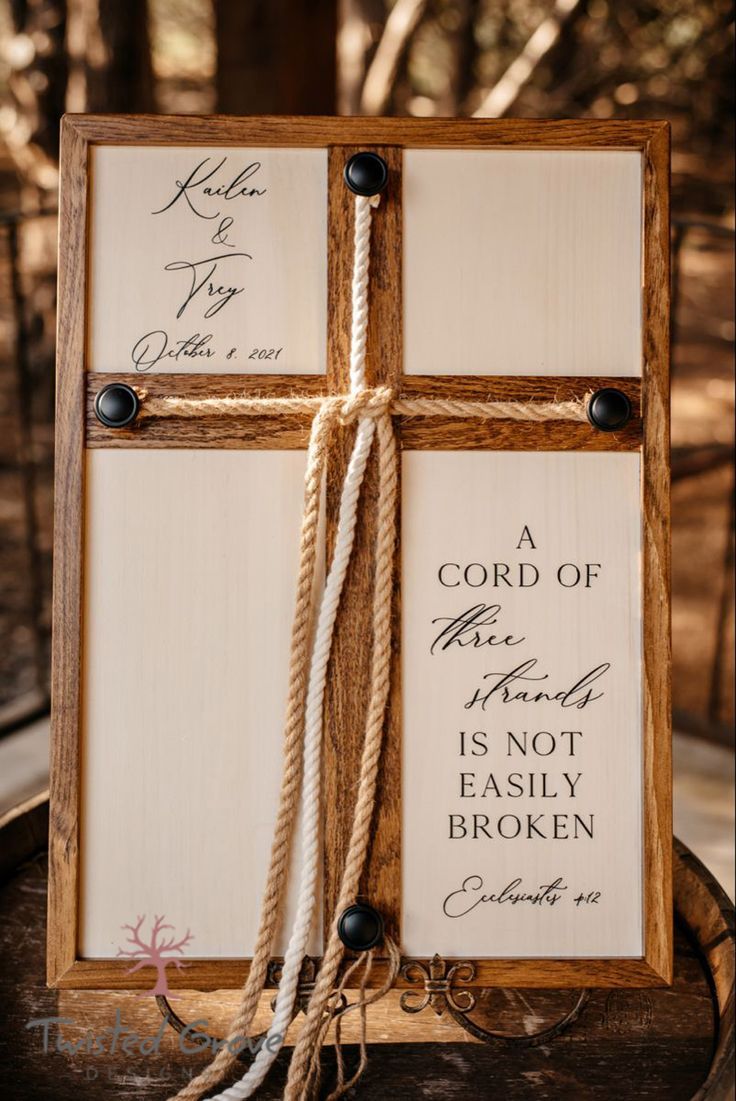Weddings are profound celebrations of love, a commitment between two individuals to journey through life together. As families and friends gather to witness these joyous unions, various traditions emerge, each rich with symbolism. One such tradition that has garnered attention and admiration is the “Cord of Three Strands” unity ceremony. This practice, often characterized by the braiding of three cords, is more than a mere visual representation of unity; it encapsulates the essence of a relationship fortified by love, faith, and community.
At its core, the “Cord of Three Strands” refers to a biblical scripture found in Ecclesiastes 4:12, which states, “A cord of three strands is not quickly broken.” This metaphor highlights the strength that comes from three interconnected strands, each representing essential pillars of a successful marriage. Typically, the strands symbolize the couple and the divine—often interpreted as God, who plays a pivotal role in their union. This element of faith adds a profound layer to the ceremony, inviting a sense of spiritual significance to their lifelong commitment.
Beyond its religious undertone, the ceremony serves to address a common observation: the collaborative effort required in a successful relationship. It brings to light that marriage is not merely a bond between two souls but a union enhanced by external influences and support systems. As couples weave their cords, they also symbolically intertwine their families and communities, acknowledging that love flourishes in an environment of shared values and mutual encouragement.
The visual of braiding itself is particularly compelling. Each strand, distinct yet harmonious, represents individual journeys converging to create something stronger than the sum of its parts. In many ways, this mirrors the complexities of marital relationships, where personal identities must coalesce without sacrificing individuality. The unity ceremony thus acts as a reminder that while each partner brings their unique qualities to the relationship, it is through working together that they can create a robust partnership.
Furthermore, the act of physically interweaving the cords often sparks reflection among those present. Witnesses of the ceremony may ponder their own relationships—parents, friends, and family members alike are encouraged to consider how their influences have contributed to the couple’s shared vision. In this sense, the “Cord of Three Strands” serves as a catalyst for deeper conversations surrounding love and community, fostering a collective sense of belonging and a shared commitment to the couple’s journey ahead.
Couples may choose different colors or types of materials for their cords, which can imbue the ceremony with personal significance. For instance, using materials that hold sentimental value—perhaps a family heirloom or fabric from significant life events—can tether the new couple to their past while building a future together. This personal touch provides an extraordinary layer to the ceremony, transforming it into a cherished rite of passage that transcends the moment of marriage. The intricacies of colors and materials can be instructive, encouraging couples to articulate their values, desires, and hopes succinctly.
Moreover, the “Cord of Three Strands” wedding ceremony hints at an intrinsic fascination with the concept of triads. Beyond spiritual significance, the trio brings to mind various modes of connection—mind, body, and spirit; past, present, and future; love, trust, and respect. Each of these triadic frameworks fosters a deeper comprehension of what it means to love and be loved. Therefore, the “Cord of Three Strands” becomes an emblem for exploring the multifaceted nature of relationships drenched in emotional depth.
The ambience of the ceremony also enriches its meaning. Couples often choose to host their unity ceremonies in serene, intimate settings—perhaps a tranquil garden or a serene beach. The backdrop blends natural beauty with poignant emotion, embodying the organic nature of love. In addition, music often accompanies the braiding of the cords, with melodies resonating both personal and universal truths about love. The act becomes not just a ritual, but a sensory experience, elevating the ceremony’s emotional resonance and commanding a deeper appreciation for the moment.
In the end, the “Cord of Three Strands” is a compelling reminder that love is not forged in isolation. Rather, it is a collective accolade, bolstered by the strength of those who value and support it. As couples embrace this tradition within their wedding ceremonies, they engage in a dialogue that resonates far beyond the day of their nuptials. They invite their community to cultivate relationships that encourage growth, reinforce resilience, and celebrate the beauty of interdependence.
Ultimately, the significance of the “Cord of Three Strands” extends beyond the wedding day itself. It offers a metaphorical framework that couples can carry with them as they navigate the complexities of marriage. The lessons learned through this ceremony can serve as guideposts during adversities, reminding partners that while challenges may arise, their union—fortified by faith and community—can withstand the tests of time. In this beautiful interplay of love, connection, and shared commitment, couples are united not just in the present but in the intricate tapestry of their lives yet to unfold.
